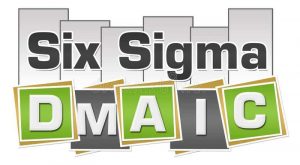
Trusted Training Partners


















Home / Specialist / Specialist Courses / Clone of Lean Six Sigma Black Belt Training Course
Quick Look Course Summary:Clone of Lean Six Sigma Black Belt Training Course
-

Next Public Course Date:
-

Length: 15 day(s)
-

Price (at your venue): 1 Person R 0.00 EX VAT 3 Person R 0.00 EX VAT 10 Person R 0.00 EX VAT
-

Certification Type: Non-Accredited
-

Locations & Venues: Off-site or in-house. We train in all major city centres throughout South Africa.

Get Free & personalised
Training Advice
WHAT IS LEAN SIX SIGMA?
Lean Six Sigma is not an add-on to normal business activities. When implemented correctly, it is an integral part of the management and production process – driven by data and philosophy.
Six Sigma is a data-driven approach for eliminating defects and waste in any business process. You can compare Six Sigma with turning on your kitchen tap and experiencing the flow of clean, clear water. Dependable systems are in place to treat, purify and pressurize the water through the tap. “That is what Six Sigma does to business: it treats the processes in business so that they deliver their intended result.” (as cited on the IASSC website). Lean means getting rid of the baggage that slows any process down, and not just production.
Together Lean philosophy and Six Sigma can assist any business, with production processes, redundant floor space, complaints resolution, eliminating waste and improving efficiencies within all aspects of an organization. Important to note; is that Lean Six Sigma is not about getting rid of people, but rather empowering employees to be more efficient in their own space.
This course will comprehensively teach participants the entire Lean Six Sigma methodology and essential business principles, including practice activities to do during and between workshop sessions.
Participants will be taught Basic Statistics (YB & GB) and Advanced Statistics (GB & BB); The Harada Method (GB & BB); Theory of Constraints (only Black Belts); the philosophy & the foundations of the 5 Principles of Lean and Six Sigma DMAIC. Armed with various tools within each phase, participants will be able to simplify complexed business problems through analysing data for variation and ultimately coming up with practical solutions. The aim of which is to reduce waste, minimise defects, improve efficiencies and bottom-line results.
Description
Lean Six Sigma Training
All Six Sigma Training is done according to the syllabus for the various courses specified. We offer the following training:
- Lean Six Sigma Yellow Belt (LSSYB)
- Lean Six Sigma Green Belt (LSSGB)
- Lean Six Sigma Black Belt (LSSBB)
The Modules are similar for the different levels except for the depth in each case.
The structure of the training contact time is divided as follows:
- In-class, instructor led training
- Self-Study (including mandatory assignments, exam and case study to complete and submit)
In-class, instructor led training:
At the end of each classroom contact session, the participant mut successfully complete a True/False and Essay type exam/test for each module.
Case Study:
The case study provides information as if it were a real-life business problem. The participant is expected to apply the (RECOGNIZE) DEFINE, MEASURE, ANALYSE, IMPROVE and CONTROL phases of Six Sigma using the information provided at each stage, to solve the problem “hidden” in the data; and to “deliver” the expected financial benefits. Through working through the case study, the participant demonstrates the underlying thinking process and application of the appropriate tools learnt during the training.

Lean Six Sigma Black Belt Training
Black Belts- apply 6 Sigma methodology to specific projects. They devote 100% of their time managing multiple Lean 6 Sigma Projects and focus on project execution.
Course Duration
- 15 days In-class, instructor led training
- 7 days Self-Study (including mandatory assignments, exam and case study to complete and submit)
- TOTAL of 177 hours
The Lean Six Sigma Black Belt is a professional well versed in the Lean Six Sigma Methodology, who leads improvement projects, typically in a full-time role. A Lean Six Sigma Black Belt possesses a thorough understanding of all aspects within the phases of D-M-A-I-C. They understand how to perform and interpret Six Sigma tools and how to use standard principles of Lean.
Our Black Belt Lean Six Sigma Training consists of 15 in class instructor-led sessions, run over 14 weeks and these can be configured to suit business needs: i.e., 10 consecutive or 4 consecutive weeks, a 2 week break then another 4 consecutive weeks and 1 week break and then the 2 last weeks (so effectively completed within 13 weeks). Together we can determine the best time frame configuration. Classes run with a minimum or 2 and maximum of 10 delegates per instructor led contact session. In between the various training sessions, delegates will be tasked with self-study, exercises, case studies & assessments to complete, along with a few relevant videos to view…which accumulate to 7 days( 16 hrs compulsory HW, assignments and exam; and 40 hrs on a compulsory case study).
Delegates will be tasked beforehand to identify a problem area or project and this will form the basis of their practical application of the theory in combination to completing a simulation/ case study.
After each phase of the training, the delegates will be given tasks which they will then apply practically (i.e, collate, collect, stratify data etc.), this is then built on over the duration of the course. Delegates will further complete assessments at the end of each module to determine the level of understanding.
Delegates will be assessed at the end of each module and given self-study/pre-reading, case studies and a simulated project to show understanding and application of acquired principles.
A succinct Case Study (eg, slides indicating practical application of the various tools) will be submitted to the coach/facilitator for marking and feedback.
Course Overview
Define Phase
The Basics of Six Sigma
- Meanings of Six Sigma
- General History of Six Sigma & Continuous Improvement
- Deliverables of a Lean Six Sigma Project
- The Problem Solving Strategy Y = f(x)
- Voice of the Customer, Business and Employee
- Six Sigma Roles & Responsibilities
The Fundamentals of Six Sigma
- Defining a Process
- Critical to Quality Characteristics (CTQ’s)
- Cost of Poor Quality (COPQ)
- Pareto Analysis (80:20 rule)
- Basic Six Sigma Metrics
- including DPU, DPMO, FTY, RTY Cycle Time, deriving these metrics and these metrics
Selecting Lean Six Sigma Projects
- Building a Business Case & Project Charter
- Developing Project Metrics
- Financial Evaluation & Benefits Capture
The Lean Enterprise
- Understanding Lean
- The History of Lean
- Lean & Six Sigma
- The Seven Elements of Waste
Overproduction, Correction, Inventory, Motion, Over processing, Conveyance, Waiting
- 5S
- Straighten, Shine, Standardize, Self-Discipline, Sort
Measure Phase
Process Definition
- Cause & Effect / Fishbone Diagrams
- Process Mapping, SIPOC, Value Stream Map
- X-Y Diagram
- Failure Modes & Effects Analysis (FMEA)
Six Sigma Statistics
- Basic Statistics
- Descriptive Statistics
- Normal Distributions & Normality
- Graphical Analysis
Measurement System Analysis
- Precision & Accuracy
- Bias, Linearity & Stability
- Gage Repeatability & Reproducibility
- Variable & Attribute MSA
Process Capability
- Capability Analysis
- Concept of Stability
- Attribute & Discrete Capability
- Monitoring Techniques
Analyze Phase
Patterns of Variation
- Multi-Vari Analysis
- Classes of Distributions
Inferential Statistics
- Understanding Inference
- Sampling Techniques & Uses
- Central Limit Theorem
- Hypothesis Testing
- General Concepts & Goals of Hypothesis Testing
- Significance; Practical vs. Statistical
- Risk; Alpha & Beta
- Types of Hypothesis Test
- Hypothesis Testing with Normal Data
- 1 & 2 sample t-tests
- 1 sample variance
- One Way ANOVA
Improve Phase
- Simple Linear Regression
- Correlation
- Regression Equations
- Residuals Analysis
- Multiple Regression Analysis
- Non- Linear Regression
- Multiple Linear Regression
- Confidence & Prediction Intervals
- Residuals Analysis
- Data Transformation, Box Cox
- Designed Experiments
- Experiment Objectives
- Experimental Methods
- Experiment Design Considerations
- Full Factorial Experiments
- 2k Full Factorial Designs
- Linear & Quadratic Mathematical Models
- Balanced & Orthogonal Designs
- Fit, Diagnose Model and Center Points
- Fractional Factorial Experiments
- Designs
- Confounding Effects
- Experimental Resolution
Control Phase
- Lean Controls
- Control Methods for 5S
- Kanban
- Poka-Yoke (Mistake Proofing)
- Statistical Process Control (SPC)Data Collection for SPC
- Data Collection for SPCI-MR Chart
- I-MR Chart
- Xbar-R Chart
- U Chart
- P Chart
- NP Chart
- X-S chart
- CumSum Chart
- EWMA Chart
- Control Methods
- Control Chart Anatomy
- Subgroups, Impact of Variation, Frequency of Sampling
- Centre Line & Control Limit Calculations
- Six Sigma Control Plans
- Cost Benefit Analysis
- Elements of the Control Plan
- Elements of the Response Plan
- Including Tests of Equal Variance, Normality Testing and Sample Size calculation, performing tests and interpreting results.
Hypothesis Testing with Non-Normal Data
- Mann-Whitney
- Kruskal-Wallis
- Mood’s Median
- Friedman
- 1 Sample Sign
- 1 Sample Wilcoxon
- One and Two Sample Proportion
- Chi-Squared (Contingency Tables)
- Including Tests of Equal Variance, Normality Testing and Sample Size calculation, performing tests and interpreting results

Successful Completion
- Successful completion requires passing of all exams provided by BOTI for each Module, as well as the Case Study.
- Upon completion, all delegates will receive a Certificate of Attendance from BOTI.
- All Participants are encouraged to register and complete the IASSC exams for the appropriate levels to achieve International registration and recognition.
- To earn an IASSC certification, participants will need to successfully sit for and pass an official IASSC certification™ exam. BOTI provides access to IASSC Certification exams for an additional cost of:
- $195 USD for LSSYB
- $295 USD for LSSGB
- $395 USD for LSSBB
Realize incredible savings by sending more delegates
Duration: 15 day(s)
Delegates: 1
Cost (incl):




